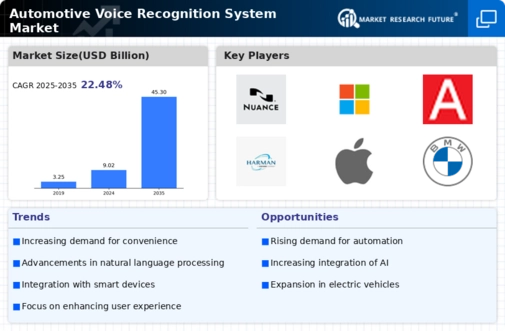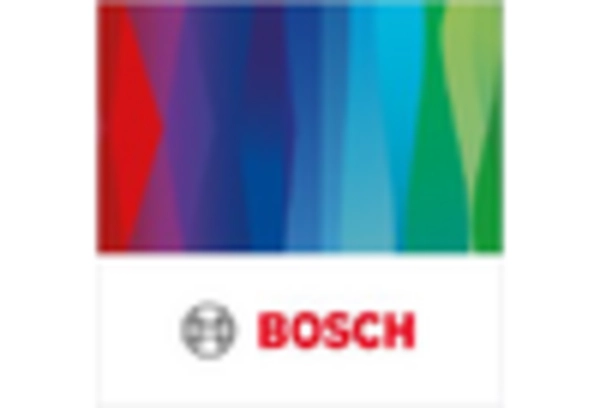Automotive Voice Recognition System Market Summary
As per MRFR analysis, the Automotive Voice Recognition System Market was estimated at 8.953 USD Billion in 2024. The Automotive Voice Recognition System industry is projected to grow from 10.97 USD Billion in 2025 to 83.31 USD Billion by 2035, exhibiting a compound annual growth rate (CAGR) of 22.48 during the forecast period 2025 - 2035.
Key Market Trends & Highlights
The Automotive Voice Recognition System Market is poised for substantial growth driven by technological advancements and increasing consumer demand for enhanced user experiences.
- The integration with smart technologies is becoming a prevalent trend, enhancing the functionality of automotive voice recognition systems.
- Personalization of user experience is increasingly prioritized, allowing for tailored interactions that improve driver satisfaction.
- Regulatory influences are shaping the adoption of voice recognition systems, particularly in North America, where safety standards are stringent.
- Rising demand for advanced driver assistance systems and technological advancements in natural language processing are key drivers propelling market growth.
Market Size & Forecast
| 2024 Market Size | 8.953 (USD Billion) |
| 2035 Market Size | 83.31 (USD Billion) |
| CAGR (2025 - 2035) | 22.48% |
Major Players
Nuance Communications (US), Microsoft (US), Google (US), Amazon (US), Apple (US), Bosch (DE), Continental (DE), Denso (JP), Harman International (US), Valeo (FR)


















Leave a Comment